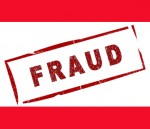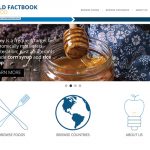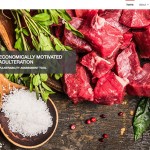In a two-question format, the authors discuss pressing issues in food fraud.
1. Where are the current hot spots for food fraud?
Food fraud activities have been known for centuries. For example, in ancient Rome and Athens, there were rules regarding the adulteration of wines with flavors and colors. In mid-13th century England, there were guidelines prescribing a certain size and weight for each type of bread, as well as required ingredients and how much it should cost. In the United States, back in 1906, Congress passed both the Meat Inspection Act and the original Food and Drugs Act, prohibiting the manufacture and interstate shipment of adulterated and misbranded foods and drugs. However, evidence and records of actions taken over those events were not officially collected.
It was not until 1985, when the presence of diethylene glycol (DEG) was identified in white wines from Austria, that authorities, retailers and consumers started to have serious concerns about the adulteration of food and the severity of its impact on consumers. In addition, there was increased interest to regulate, investigate and apply efforts to enforce requirements.
Other examples include the following:
- 2005: Chili powder adulterated with Sudan (India)
- 2008: Dairy products adulterated with melamine (China)
- 2013: Beef substituted with horsemeat (UK)
- 2013: Manuka honey where it was known that bees were not feeding from pollen of the Manuka bush (New Zealand)
- 2016: Dried oregano adulterated with other dried plants (Australia)
This list can go on and on.
Lately there have been more cases of food fraud. Fortunately, even limited international databases are helping to identify the raw material origins of products in the supply chain that could be more exposed to adulteration. Also, food manufacturers, brokers and agents are conducting assessments to ensure that they are buying ingredients and products from sources, where food fraud could be prevented. The following products are identified as having more adulteration notifications:
- Olive oil
- Fish
- Vegetable products with claims of “Organic”
- Milk
- Grains
- Honey and maple syrup
- Coffee and tea
- Spices
- Wine
- Fruit Juices
2. What can companies do to mitigate the risk?
Control measures to prevent food fraud activities include the adequate evaluation and selection of suppliers, as well as the ‘suppliers of the suppliers’. Typical risk matrices of likelihood of occurrence versus consequence can be used to measure risk—and determine priorities for assessing and putting control measures in place. Assessments can be focused on points of vulnerabilities such as food substitution, mislabeling, adulterations and/or counterfeiting, usually due to economic advantages for one or more tiers in food chain production.
Other food fraud activities include effective traceability systems, monitoring current worldwide news and notifications on food fraud using international databases (EU-RASFF, USA- EMA NCFPD and USP, etc.), and product testing.
Product testing is becoming an important tool for the food industry to become confident in sourcing raw materials, ensuring the management of food fraud control measures, fulfilling applicable legal requirements, and ensuring the safety of consumers.
Product testing laboratories offer different kinds of testing methods depending on the required output; for example, if it is possible and requested, a targeted or non-targeted result.
Targeted analysis involves screening for pre-defined components in a sample:
- Liquid chromatography
- Gas chromatography
- Mass spectrometry (LC-MS and GC-MS)
- Nuclear magnetic resonance spectroscopy (NMR).
- PCR technique
Non-targeted analysis aims to see any chemical present in the sample:
- Isotopic measurement-determination of whether ethanol and vinegar and flavorings are natural or synthetic
- Metabolomics: Maturation and shelf life
- Proteomics: Testing for pork and beef additives in chicken, confectionery and desserts
Due to the importance of food fraud for a food safety management system, GFSI published Version 7.1 of Benchmarking Requirements, including subjects on food fraud, as vulnerability assessment. In 2018 all certification schemes have incorporated such requirements and started enforcing them.
Fraud cases threat consumer trust in products and services. Companies are learning to “think like a criminal” and put in place measures to prevent fraud and protect their products, their brands and their consumers.









